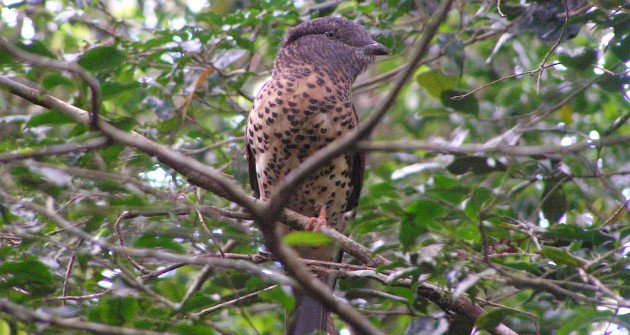PROTECT YOUR DNA WITH QUANTUM TECHNOLOGY
Orgo-Life the new way to the future Advertising by Adpathway
By Matthew Orolowitz
Matthew is the Birding Ecotours Fellow of Grassland Conservation at BirdLife South Africa, based in Wakkerstroom, Mpumalanga. In this role, he is dedicated to the long-term preservation of the Wakkerstroom region, with a particular emphasis on safeguarding endangered and endemic species, including Botha’s Lark and Rudd’s Lark. His responsibilities encompass conducting scientific research, implementing monitoring programs, and fostering community engagement through biodiversity stewardship initiatives. Matthew has an MSc in Conservation Biology from the University of Cape Town’s Fitzpatrick Institute of African Ornithology. His MSc thesis delved into how larks adapt their behavior to survive in hot and arid environments.
Deep in the rolling grasslands of South Africa, an unusual sight caught the attention of researchers: a Botha’s Lark trailing closely behind a Rudd’s Lark. For several minutes, the diminutive Botha’s Lark followed the Rudd’s Lark—a bird of similar size but from a different genus—through the undulating veld. This seemingly innocuous behavior may hold a deeper, sobering story about the challenges facing these grassland birds.
Botha’s Lark and Rudd’s Lark are two of South Africa’s most threatened endemic species. Both species rely on the Highveld’s pristine grasslands for survival—habitats that are rapidly shrinking due to agricultural expansion and changing agricultural practices, mining, and development. Despite sharing overlapping ranges, the two species typically keep to themselves, each with unique behaviors and breeding strategies – essentially occupying their own niches. The challenges faced by Botha’s Larks are compounded by their specialized needs. Unlike generalist species that adapt to a range of environments, Botha’s Lark requires specific grassland conditions—open, short-grass areas with minimal disturbance. When these conditions vanish, the birds are left with few options.
In this fascinating series of observations, wherever the Rudd’s Lark moved, the Botha’s Lark followed. This behavior was not observed just once but repeatedly throughout the breeding season. The Botha’s Lark would often display and closely trail the Rudd’s Lark, raising questions about its motivations and the implications for its survival. So why was the Botha’s Lark shadowing the Rudd’s Lark? It could reflect the population decline these birds face in the wild.
Botha’s Larks are notoriously scarce, and their numbers are alarmingly low. Recent surveys suggest that the number of birds has dwindled to just 340 individuals, making it increasingly difficult to find mates. As the species’ suitable habitat and niche availability shrink, it is likely to come into contact more often with another, closely related species, as it struggles to adapt to the loss of prime habitat. In such a scenario, hybridization between rare species has been documented in other parts of the world, and it is possible that a lonely Botha’s Lark might be forced to attempt selecting a Rudd’s Lark for a potential partner—a poignant indication of the scarcity of suitable mates. The offspring of hybridization – the interbreeding of two separate species – is rarely viable.
While the sight of a Botha’s Lark attempting courtship with a Rudd’s Lark may evoke concern, it also serves as a call to action. Protecting their habitats can ensure these birds have the space and resources they need to thrive. Healthy grasslands are more than just a haven for birds; they play a crucial role in ecosystem functioning. These ecosystems provide essential services such as carbon storage, water filtration, nutrient cycling promoting soil health, and seed dispersal and pollination services, which directly benefit human livelihoods. When grasslands thrive, they support biodiversity and sustain the communities that rely on them for grazing, farming, and natural resources.
Efforts are underway to protect South Africa’s grassland birds, with stewardship programs that encourage sustainable land use, and through scientific research that sheds light on the needs of species like Botha’s Lark. However, these efforts require collaboration between landowners, conservationists, and policymakers. Birding Ecotours supports these efforts by funding research and conservation efforts.
See here for a slightly expanded version of this post.
Written by a Guest
We welcome guest writers and invite you to share your insight and excitement about issues pertaining to wild birds and birding. If you’ve got something to share about conservation, birds, or birding, feel free to contact us about writing a post.























 English (US) ·
English (US) ·  French (CA) ·
French (CA) ·